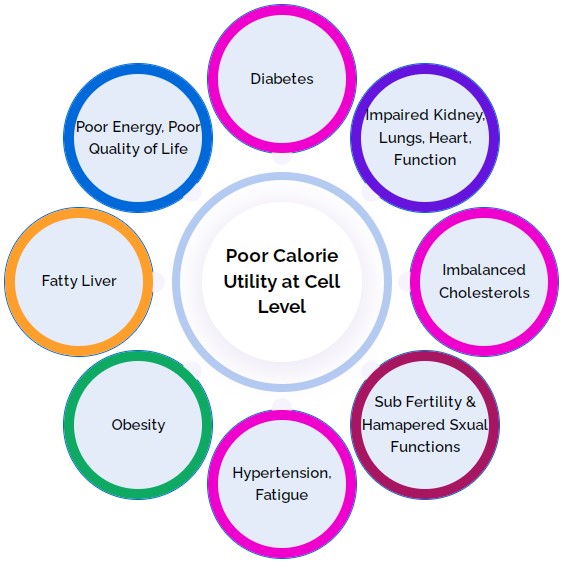Metabolic Disorder
Home > Metabolic Disorder
What is a metabolic disorder?
A metabolic disorder occurs when the metabolism process fails and causes the body to have either too much or too little of the essential substances needed to stay healthy.
Our bodies are very sensitive to errors in metabolism. The body must have amino acids and many types of proteins to perform all of its functions. For example, the brain needs calcium, potassium, and sodium to generate electrical impulses, and lipids (fats and oils) to maintain a healthy nervous system. Metabolic disorders can take many forms. This includes:
a missing enzyme or vitamin that’s necessary for an important chemical reaction
abnormal chemical reactions that hinder metabolic processes
a disease in the liver, pancreas, endocrine glands, or other organs involved in metabolism
nutritional deficiencies

Metabolic Disorder Treatment
Metabolic syndrome is characterized by the clustering of several metabolic abnormalities frequently observed in clinical practice:
Abdominal obesity, dyslipidaemia, hyperinsulinemia, impaired fasting glucose, and high blood pressure, according to the International Diabetes Federation, the American Heart Association, and the National Heart, Lung, and Blood Institute harmonizing definition.
In a prospective cohort study done on middle-aged healthy men, Metabolic Syndrome was associated with cardiovascular disease and mortality, and a published meta-analysis of longitudinal studies revealed an association between Metabolic Syndrome and a higher risk of developing type 2 diabetes mellitus, cardiovascular disease, atherosclerosis, and higher all-cause mortality. Due to the existence of different definitions for diagnosing this syndrome, prevalence estimates vary. However, it is accepted that the prevalence of Metabolic Syndrome generally increases as body mass index and age increase. In developed countries, the prevalence of Metabolic Syndrome is about 25% of the adult population, and its incidence has been increasing over the last years leading to the requirement of metabolic disorder treatment in Pune, India. Genetics cannot explain these differences alone, and environmental influences play an important role. Several articles have shown the association between different lifestyle habits and the risk of developing Metabolic Syndrome according to the harmonizing definition. In this context, eating habits are considered modifiable determinants of Metabolic Syndrome.
Symptoms
Most of the disorders associated with metabolic syndrome don’t have obvious signs or symptoms. One sign that is visible is a large waist circumference. And if your blood sugar is high, you might notice the signs and symptoms of diabetes — such as increased thirst and urination, fatigue, and blurred vision.
Metabolic Disorder
A metabolic disorder occurs when the metabolism process fails and causes the body to have either too much or too little of the essential substances needed to stay healthy. If aggressive lifestyle changes such as diet and exercise aren’t enough, your doctor might suggest Metabolic Disorder Treatment in Pune to help control your blood pressure, cholesterol and blood sugar levels.

Poor Calorie Utility at Cell Level

risk factors
- Too much fat at the waist
- High blood pressure
- High triglyceride levels
- Low HDL cholesterol
- High fasting glucose (blood sugar)
Leads to damage to the blood vessels & multiorgan Disease.
Preventions
- Workout regularly
- Healthy diet
- Eat plenty of fruits and vegetables
- Quitting smoking and avoiding secondhand smoke
- Limiting alcohol
Lorem ipsum dolor sit amet, consectetur adipiscing elit. Ut elit tellus, luctus nec ullamcorper mattis, pulvinar dapibus leo.
